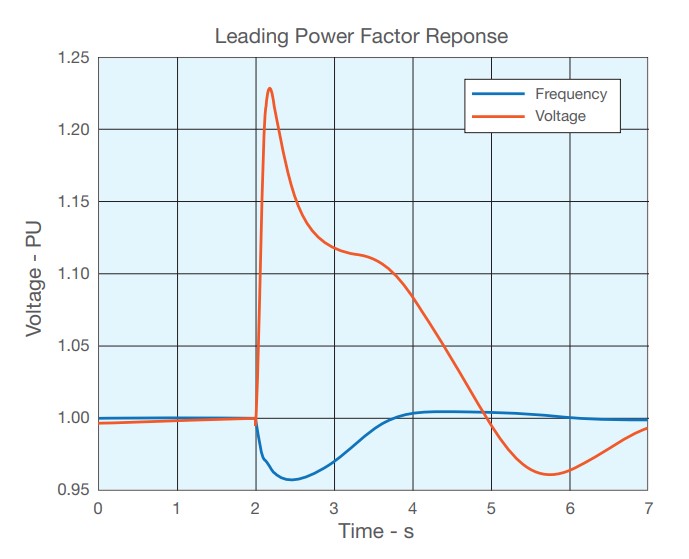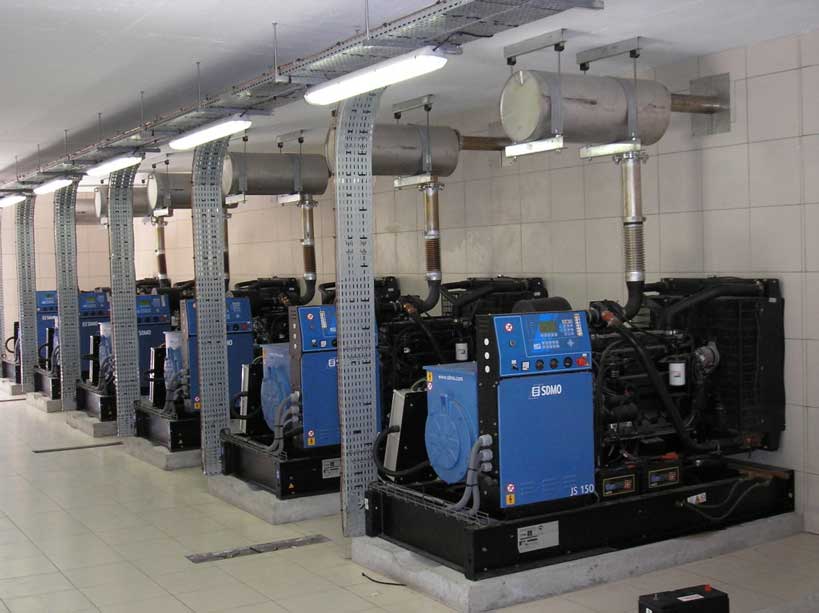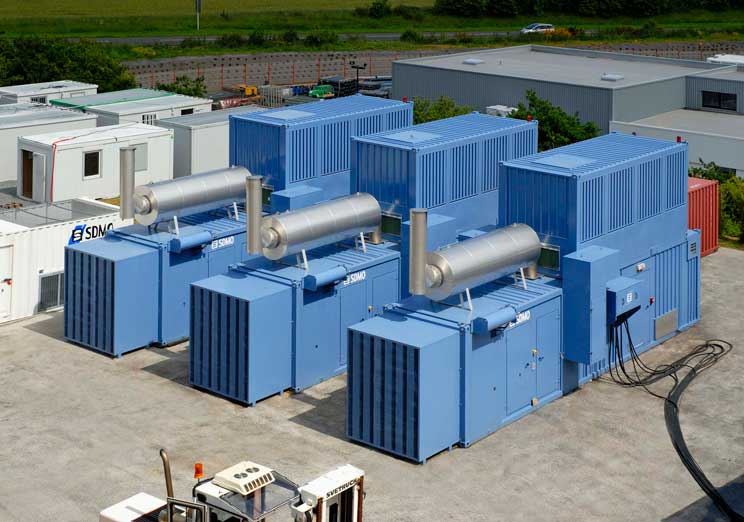In the first three-quarters of the 20th century standby generators were primarily used for emergency lighting. But as technology and generator capacity have improved, the uses for standby generators grew more varied.. In the 1970s and 1980s, the industry experienced significant growth as applications diversified from emergency lighting to include more complex operations, including: water treatment plants, pumping stations, telecommunications antennas, etc.

As loads began to vary the range of the generators also had to be greater. In the 21st century, generators have experienced a notable increase in the scope of the loads that need to be served. Installations served by standby power are becoming more complex. Meanwhile, capacitive loads and transformers becoming more prevalent amid growth of the data services industry. More than ever, there is a need to operate 365 days a year, 24 hours a day, 7 days a week. This means backup power generators must play a leading role.
Fortunately, the factors related to the main power factor loads and the downstream transformers are well known. This allows the engineer to analyze the application and correctly coordinate the specifications of the backup power generating equipment to be installed.
Thank you!
We will contact you soon.
A challenge on the way: The dominant capacitive load.
Previously, the usual load that an emergency generator had was resistive (for example: filament lighting) and inductive (for example: motors). But as generators have evolved, the variation of capacitive loads available on the market has increased substantially (for example: uninterruptible power supplies, LED lighting). We can say that capacitive loads present a new challenge.
With a typical single resistive or single inductive load, the standby power generator typically responds by dropping the voltage and dropping motor speed. If this motor frequency drop is large enough, the modern voltage regulator has the ability to compensate by lowering the voltage (to reduce load) to allow the motor to recover. This capability is called the charge acceptance function or V/Hz.
However, if the dominant load is capacitive, the scenario changes. This means the response of the generator must also change. The response may be an increase in voltage and a drop in speed of the motors, since it is going from an under-excited to an over-excited rate. In this case, the voltage regulator is already fighting alternator overdrive, and there may be a delay in activating the load acceptance behavior to allow the engine to catch up.
In the image below you can see the behavior graph of voltage and frequency when lagging power factor loads are introduced.

In the image below you can see the behavior graph of voltage and frequency when leading power factor loads are introduced.

Therefore, in consideration of the behavior of the transient regime of the power factor, the design and production of the modern generator has included a reevaluation of the requirements traditionally used around the load. The central point of this adaptation is to account for the reactive capacity curve of the alternator. This avoids periods of instability and/or potential damage to the alternator.
What happens when the load is mixed?

These days, most typical loads are mixed. Resistive, inductive or capacitive loads may predominate at any given time. It is important to know that the effect of the type of load is not only on the transient regime but also has effects on the stationary regime. So if the capacitive element is not balanced by design in the phases of a power generating system, any unbalance voltage that the generator would present in the steady state would be exacerbated.
Depending on the nature of the load, the backup generator must:
- With an inductive load applied, the voltage regulator needs to increase the excitation to bring the voltage up to the rated operating value.
- With a capacitive load applied, the voltage regulator needs to reduce the excitation to bring the voltage down to the nominal operating value.
The transformer as load.
The increasing complexity of installations has given rise to larger and more complex configurations with transformers present in the installations served by standby generators. The kVA ratings of these transformers can be as large as, if not greater than, the rating of the standby generator itself even though the standby loads downstream from the transformer(s) are within the capabilities of the standby generator. In these cases, the main variable becomes the transformer inrush in the load equation served by the generator.
Can a generator power the transformer(s)?
This question does not have a simple answer and demands three stage response, only one of which is handled by the generator manufacturer:
Stage 1: Design and manufacture of the generators. (They are variables always handled by the manufacturer of the generators)
Stage 2: The characteristics of the transformer or transformers present in the load. (Always unknown by the generator manufacturer).
Stage 3: The installation. (Also unknown to the manufacturer).
Fortunately, the factors related to the main power factor loads and the downstream transformers are well known so that the specifying engineer can analyze the application and correctly coordinate the specifications of the backup power generating equipment to be installed.
Mitigation strategies for engineers responsible for generator specifications. Sequential start of loads.
If there are multiple transformers on the load served by a generator, the simultaneous inrush characteristic is problematic for proper system operation.
The following image illustrates an example for three transformers with a cumulative rating of 1.9 KVA per generator unit. It shows the generator line current during simultaneous energizing.

A sequential startup can alleviate or mitigate some of the stresses observed on generator equipment within the facility (See chart below). The figure shows the generator line current with a one-second delay between energizations.

An option for simultaneous starting of generators and energizing of transformers.
In an installation where there are transformers present, when the transformers are energized when the generator starts, the effects of the transient inrush current in the system will be mitigated. Modern voltage regulators are equipped with a load acceptance feature to ramp voltage as a function of frequency. This slope of voltage versus frequency is typically used to assist with engine speed recovery on load application. However, it is beneficial in a simultaneous start scenario as it allows for a predictable increase in voltage with motor speed. With this voltage ramp, energizing the transformer(s) does not cause excessive inrush current.
In installations where there are generators in parallel, the parallel generators can be allowed to close before the transformers are energized, which can reduce the effects of the transient event in the system. With this strategy, it must be understood that the characteristics of the system will change according to the number of generators that are supplied in parallel. Any harmonic study must consider all permitted supply scenarios.
We have seen in the previous paragraphs that capacitive loads defy general assumptions of what a load looks like from the generator and may require modified specifications.
Increasingly complex electrical networks involve more voltages throughout their facilities, and the emergence of the transformer as a component that is part of the modern load requires careful consideration of how to manage not only loads, but also the equipment between the source and the loads.
Be sure to consult your Brags & Hayes representative for assistance with medium to highly complex application designs.
This article is based on work developed and published by Adam Larson is a Senior Staff Engineer at Kohler Co. Adam is a member of IEEE and has authored papers on electric machine design and optimization.


